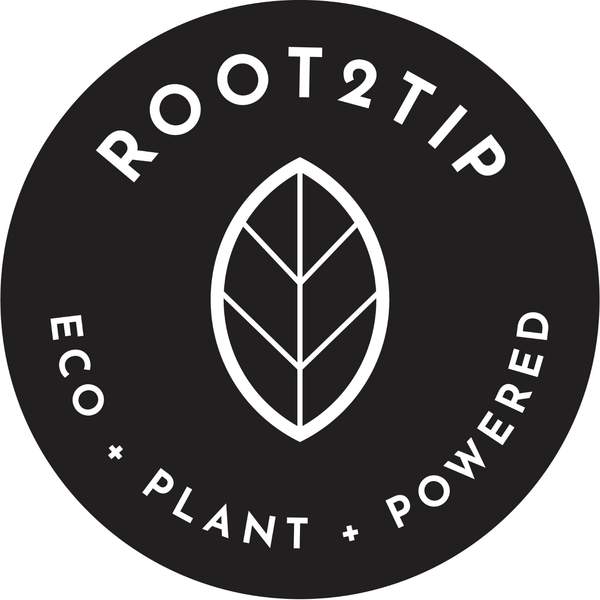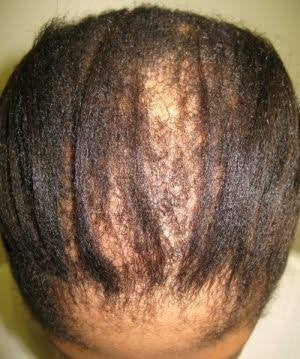Traction alopecia is a form of hair loss in which mechanical damage to the hair follicle is caused by repeated tension or pulling. This type of hair loss is common among people especially African women, although it may be seen among all ethnic groups and ages. Ballerinas, gymnasts, military personnel and certain professionals who are required to wear their hair pulled back, may develop traction alopecia.
Women’s having Afro hairs are more likely than other populations to experience traction alopecia due to a higher prevalence of high-tension hair styling practices and intrinsic hair qualities, including hair with lower density and tensile strength, less moisture, and slower growth rates. Although findings on the prevalence of traction alopecia among Women having afro hairs are mixed, it is estimated that approximately one-third of this population are affected. Although traction alopecia can occur in any race and gender with hairstyles that pull the hair and induce traction, it is very common in women having afro hairs because African hair is fragile and more susceptible to breakage.
The good news is, traction alopecia can be prevented and treated easily. If you stop trying your hair too tightly, you can save it from this form of hair loss.
At an early stage of traction alopecia, you may notice little bumps on your scalp. If the condition worsens, you will also see broken hair. The front and sides of your scalp are most likely to get affected first. However, other areas of your scalp might face similar hair fall, depending on your regular hairstyle

How To Determine If You Have Traction Alopecia?
Including hair loss, traction alopecia can also show symptoms like:
- Redness of the scalp
- Blisters
- Bumps
- Scaling
- Soreness of the scalp
- Folliculitis
- Itchiness
What Causes Traction Alopecia?
You can develop traction alopecia if you often wear your hair in tight hairstyles. Repeated pulling on the hair can damage the hair follicles in your scalp. Some other factors contributing to traction alopecia include:
- Wearing tight dreadlocks, weaves, and cornrows
- Using hair extensions
- Using chemical relaxers and rollers
If you have long hair, you can develop traction alopecia due to the weight of the hair pulling on the scalp. Men can also have this condition in their beards if they twist it too tightly.
Age can also be a contributing factor for traction alopecia. When you get older, your hair becomes prone to damage, which increases the chances of traction alopecia.
How To Treat Traction Alopecia?
- Change Your Hairstyle
Never opt for tight hairstyles if you have any symptoms of traction alopecia. If you need to tie your hair, make sure you keep it as loose as possible. Let your hair rest as much as you can, avoiding clips, clutches, or bands. Also, change your hairstyle every few days if possible. This will prevent strain on a particular area of your scalp.
- Limit Chemical Usage
Minimize the use of chemicals on damaged hair as it can only worsen the condition. Instead, go for plant-based cosmetics or remedies. It will not only give you visible results but also protect your hair from harmful chemicals
- Hair Care Products
Hair care products can help you in this situation. We recommend using Root2tip’s Wash and Grow Kit. The WASH & Grow Kit has been created with a science-led approach. Featuring 5 natural hair products that are created so they will beautify + strengthen your hair day after day. The WASH & Grow Kit is an all-in-one solution to manage your hair from washday to styling in 5 simple steps.
- Use Anti-Inflammatories
Traction alopecia causes swelling on your scalp, which can be painful. The swelling may be accompanied by redness and irritation. An anti-inflammatory cream can help reduce pain and swelling. However, consult a doctor before using any medication.
- Aromatherapy
Aromatherapy can help stimulate your hair growth. Essential oils like amla, cedarwood, thyme, lavender, tulsi, and rosemary can help treat traction alopecia. Root2tip’s Root Energizer Scalp Oil us a perfect solution and contains essential oils and promotes hair growth.
- Massage Your Scalp
Massaging your scalp with oil can help stimulate blood flow to your follicles, encouraging hair growth. A study found that four minutes of scalp massage a day can result in thicker hair in six months. You can use your fingertips to massage the scalp in a circular motion or buy a massage device to do the work. We recommend massaging your hair with Root2tip’s Grow It Long Scalp Serum.
Is Traction Alopecia Permanent?
Traction alopecia can be permanent if you don’t intervene at an early stage. A few warning signs can indicate if your traction alopecia is getting worse.
Signs Of Permanent Traction Alopecia
The typical signs of permanent traction alopecia are excessive hair fall and soreness in the scalp. You may particularly feel pain after releasing your hair from a tight bun or ponytail
As the condition worsens, the signs of traction alopecia can become more prominent and severe. You may notice itchiness, tightness, and swelling in the scalp. Broken hair and balding patches will also be visible. Scarring can occur if you don’t do anything to prevent it.
If you are facing severe signs of traction alopecia, you need to consult your doctor immediately. Scarring can not be cured with any topical cream, and your hair may get permanently damaged.
Your doctor will conduct a biopsy to examine your hair’s state and suggest the right medical treatment.
Can Hair Grow Back After Traction Alopecia?
As mentioned above, if traction alopecia is caught early, it is fully reversible, and your hair can regrow. Remember, it is essential to follow adequate safety measures for your hair to prevent traction alopecia.
Conclusion
So, if you’re experiencing symptoms of Traction Alopecia, take action now to protect your hair and prevent any permanent damage. With the right care and attention, you can promote hair regrowth and maintain healthy, beautiful locks. Your hair’s future health is in your hands!
Use gentle hair care methods, maintain a healthy diet, and manage your stress. If you are still concerned about your hair’s health, Root2tip offers a customized hair care regimen made for your unique hair needs. Visit us on www.root2tip.com now

